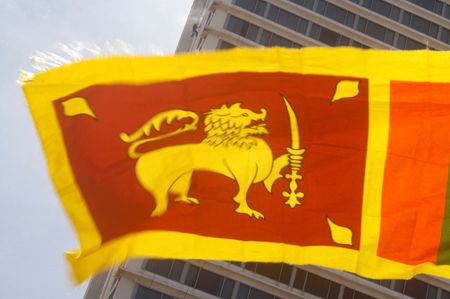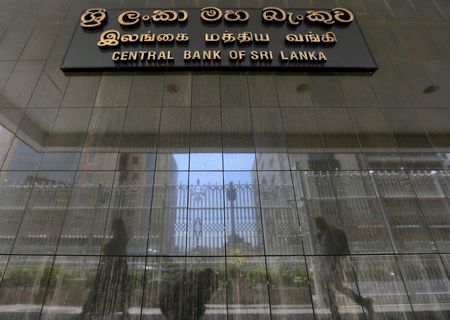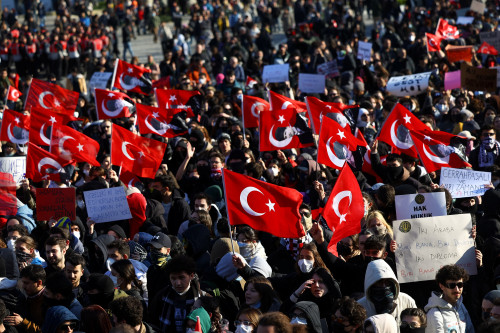(Reuters) -Sri Lanka announced a restructuring plan for its massive domestic debt on Thursday to meet targets set by the International Monetary Fund (IMF) and aim to turn around its economy, which has been hammered by a financial crisis.
The island nation is asking foreign investors in its international sovereign bonds to take a 30% haircut and is seeking similar concessions from holders of its other dollar-denominated bonds as it seeks to restructure its debt, its central bank governor.
A severe shortage of dollars tipped the country of 22 million people into its worst financial crisis since independence from Britain in 1948, triggering its first foreign debt default in May 2022.
WHAT HAS HAPPENED SO FAR?
Pledging to put its mammoth debt burden on a sustainable track, Sri Lanka locked down a $2.9 billion bailout from the IMF in March. The domestic debt restructure is needed to help the country reach the IMF programme goal of reducing overall debt to 95% of GDP by 2032.
On Thursday, the country’s central bank unveiled the restructuring plan, which includes exchanging treasury bills into long-term bonds.
WHAT WILL THE DOMESTIC DEBT RESTRUCTURING INCLUDE?
Under the domestic debt revamp, holders of locally issued dollar-denominated bonds such as Sri Lanka Development Bonds (SLDBs) will be given three options, central bank governor Nandalal Weerasinghe said.
The first would be treatment similar to investors in the country’s international sovereign bonds – a 30% principal haircut with a 6-year maturity at a 4% interest rate.
“We are asking foreign debt holders for a 30% haircut but that is still under discussion,” Weerasinghe said.
Sri Lanka currently has $12.5 billion in international sovereign bonds.
Domestic bondholders will be given two other options:
– Similar treatment to that being proposed to bilateral dollar creditors: No principal haircut, with a 15-year maturity and 9-year grace period at 1.5% interest rate.
– Exchange their holdings for local currency denominated instruments: No principal haircut with a 10-year maturity at the SLFR (Sri Lanka Standing Lending Facility Rate) + 1% interest rate.
OTHER POINTS IN THE DOMESTIC DEBT REVAMP
• Local currency bonds held by superannuation funds proposed to be exchanged for longer maturity bonds (2027 to 2038), with a step-down coupon structure of 12% (till 2025E) and 9% till maturity.
• Central Bank of Sri Lanka (CBSL) holdings of Treasury bills to be converted to bonds maturing between 2029 and 2038, with a step-down coupon structure. This will be implemented in Phase 2 of the domestic debt restructuring.
• Treasury bills and Treasury bond holdings of the banking sector have been excluded from the domestic debt restructuring considering the significant stress on the banking sector at present due to increasing non-performing loans, impact of external debt restructure and high taxation.
WHY IS THE DOMESTIC DEBT REWORK CRITICAL?
Treasury Secretary Mahinda Siriwardana said on Thursday that the restructuring would cover part of the country’s $42 billion in domestic debt.
The domestic restructuring is likely to create momentum around foreign debt renegotiations on $36 billion of external debt, including $24 billion held by bondholders and bilateral creditors such as China, Japan and India.
Sri Lanka has set a goal of finalising debt restructuring talks by September to align with the first review of its IMF programme.
WHAT ELSE DOES THE IMF WANT?
In addition to reducing debt to GDP to 95% by 2032, Sri Lanka also has to ensure average gross financing needs remain below 13% of GDP between 2027-2032 and annual foreign exchange debt service of the central government should remain below 4.5% of GDP during the same period.
The debt restructuring is also crucial for Sri Lanka to reach a 2.3% primary surplus by 2025, the key fiscal target set by the IMF.
Debt servicing reduction up to 2027 should close external financing gaps of $16.9 billion.
WHAT’S NEXT?
The domestic restructuring framework will now be presented to parliament on Saturday for approval. CBSL hopes to finalise the bond exchange of superannuated funds by July end.
HOW WILL POTENTIAL FALLOUT BE PREVENTED?
Aiming to contain any potential market volatility, Sri Lanka declared a five-day holiday from June 29 to July 3.
The special bank holidays also allow any losses from bond sales to be recognised in the third quarter of the year, analysts said.
(Reporting by Uditha Jayasinghe, compiled by Shilpa Jamkhandikar; Editing by Kim Coghill and Emelia Sithole-Matarise)






